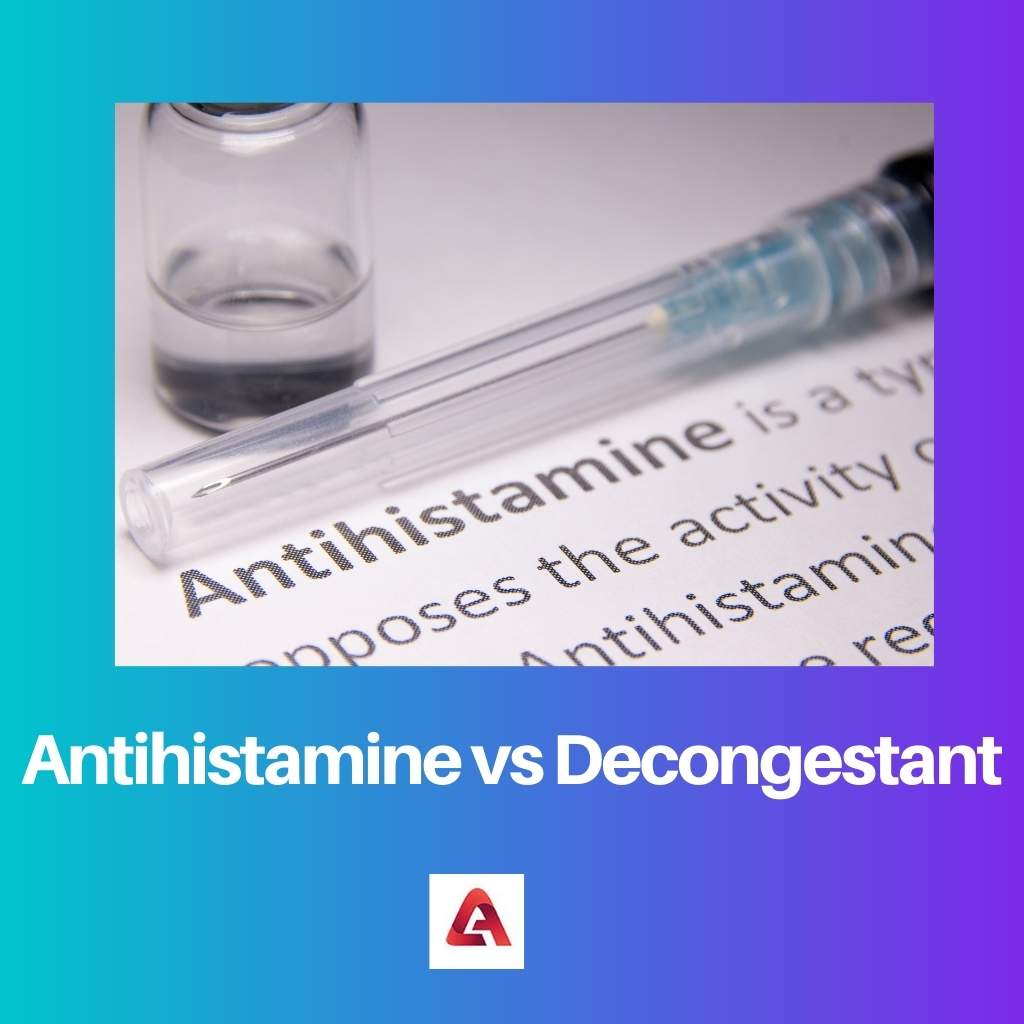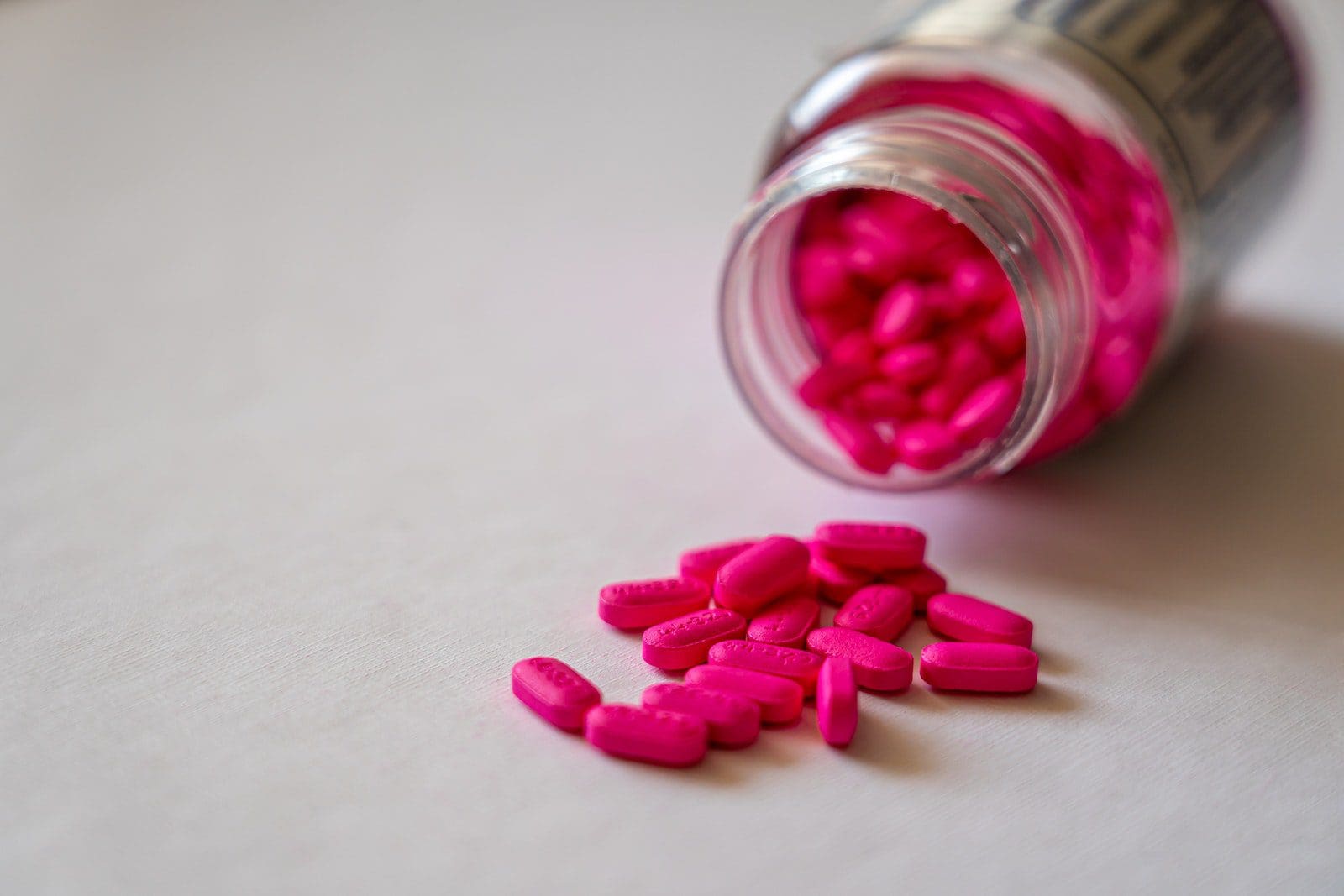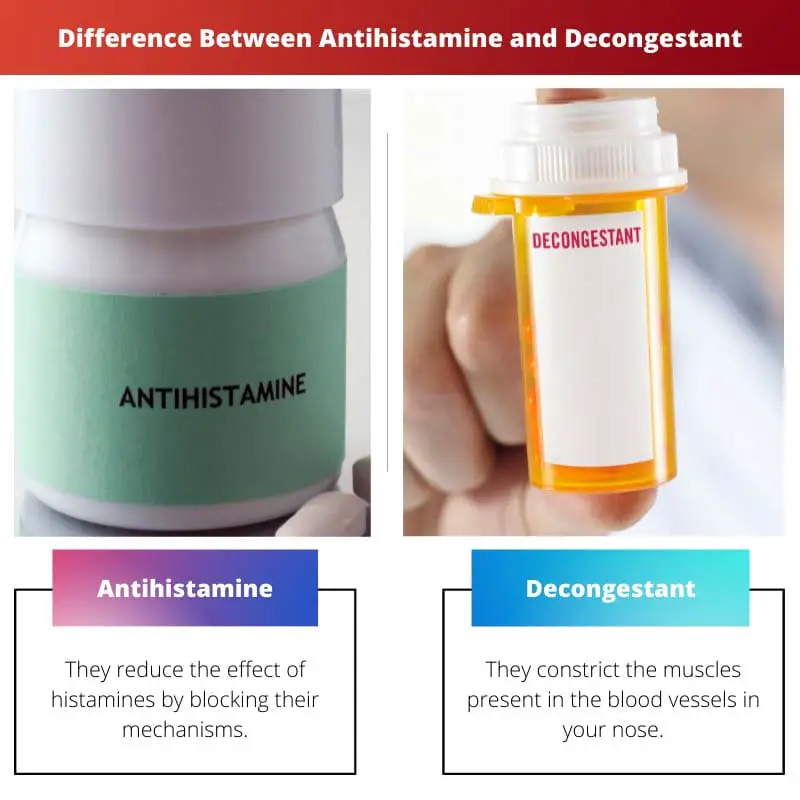If you have a cold or a runny nose, you are likely to take an Antihistamine or a decongestant. These act as allergy relief medicines or to help relieve nasal congestion, colds causing a runny nose, sneezing, hay fever, etc.
To some people, they may sound fairly similar in nature, but they are actually quite different in the way they work to help relieve the symptoms of various conditions and their mechanisms.
Key Takeaways
- Antihistamines are drugs that block the action of histamine and are used to treat allergies, while decongestants are drugs that reduce nasal congestion and are used to treat colds and flu.
- Antihistamines block histamine release in the body, while decongestants narrow blood vessels in the nasal passages.
- Antihistamines can cause drowsiness, while decongestants can cause jitteriness.
Antihistamine vs Decongestant
Antihistamines is a type of medication used to treat allergy symptoms. It blocks the effects of histamine, a chemical released during an allergic reaction. Decongestants are a type of medication used to treat allergy symptoms. It narrows the blood vessels in the nasal passages to relieve congestion.

Antihistamines are the class of drugs that help prevent or treat the symptoms of allergies, including hay fever, allergic reactions to insect bites, pollens, etc. They do so by blocking the actions of naturally occurring histamines.
On the other hand, decongestants help you by relieving the symptoms of stuffy noses or blocked noses you get by allergic reactions, colds, flu, sinusitis, etc.
They open up the airways in your nose by reducing the swelling of the blood vessels present in it, which improves the air flow.
Comparison Table
| Parameters of Comparison | Antihistamines | Decongestants |
|---|---|---|
| Mechanism | They reduce the effect of histamines by blocking their mechanisms. | They constrict the muscles present in the blood vessels in your nose. |
| Receptors | Antihistamine blocks H1 or H2 cell receptors. | Decongestants effect the alpha-adrenergic receptors. |
| Uses | These are used to treat allergic reactions, colds, stomach ulcers, GERD, motion sickness, etc. | They are used to reduce the effects of allergic reactions, anaphylactic reactions, catarrh, sinusitis, etc. |
| Available forms | Available in tablets and liquids. | Mostly available in nasal sprays, nose drops, and tablets. |
| Side effects | Blurred vision, dizziness, confusion, dry mouth, trouble urinating, drowsiness, diarrhea, etc. | Increased blood pressure, restlessness, dizziness, anxiety, insomnia, heart palpitations, headaches, increased heart rates, etc. |
What is Antihistamine?
Your body releases histamines when you come near anything that may cause an allergic reaction, like pollens, insects, animal hair, etc.
Histamines cause an allergic reaction that expands your blood vessels and causes swelling to your skin, which helps in your body’s protection.
Histamines cause various symptoms like stuffed noses, itchy and watering eyes, skin rashes, sneezing, etc. Antihistamines work towards blocking the action of these histamines or at least reducing their after-effects.
Antihistamines block histamines from blinding the H1 or H2 cell receptors that are present on the cell membrane. At the H1 receptor, antihistamines compete with the naturally occurring histamines by occupying the receptors beforehand.
The antihistamines that work on the H2 receptors work by blocking the receptors so that the histamines can’t bind with them.
They are used to treat various conditions and their symptoms like hay fever, allergic reactions, GERD, stomach ulcers, etc. Their side effects may include drowsiness, blurred vision, confusion, diarrhoea, headaches, etc.
Some examples of antihistamines are promethazine, cimetidine, loratadine, diphenhydramine, Benadryl, etc.

What is Decongestant?
Decongestants are medicines that work by reducing the swelling in your nose’s blood vessels by causing constriction in the muscles present.
They decrease the blood flow to the mucous membranes present in the nose by impacting the alpha-adrenergic receptions and binding with them.
This causes muscle contraction, which causes a decreased blood flow, resulting in the reduction of the inflammation of the tissues found. This helps you breathe better by opening up the air flow in your nasal cavities.
These medicines help in the alleviation of inflammation-related symptoms as they are vasoconstrictors.
They reduce the secretions in the nasal passageways that occur because of allergic reactions or colds that cause inflammation and excess mucus excretion.
The side effects of decongestants include increased blood pressure, heart palpitations, anxiety, insomnia, headaches, increased heart rate, etc.
Some examples of decongestants are epinephrine, phenylephrine, ephedrine, pseudoephedrine, Sudafed, Adrian nasal spray, etc. Epinephrine is used for people experiencing anaphylactic reactions or shocks.
Main Differences Between Antihistamine and Decongestant
- Antihistamines block the actions of histamines to relieve the symptoms of allergic reactions, and decongestants reduce the swelling in the blood vessels to help make breathing easier.
- Antihistamines block the H1 or H2 cell receptors during their mechanism, whereas decongestants affect the alpha-adrenergic receptors, which contract the muscles, reduce the inflammation present near your nasal passageways and help improve your airflow.
- Antihistamines are most commonly found in tablet or liquid form, and decongestants are most often found in nasal sprays or drops and tablets.
- Side effects of antihistamines include blurred vision, dry mouth, confusion, drowsiness, headaches, diarrhoea, dizziness, trouble while urinating, etc. and side effects of decongestants include insomnia, dizziness, anxiety, increased blood pressure, increased heart rates, heart palpitations, etc.
- Antihistamines help in the treatment of allergic reactions, GERD, stomach ulcers, prevent motion sickness, stomach ulcers, etc. Decongestants help reduce the effects of anaphylactic reactions, allergic reactions, sinusitis, etc.




